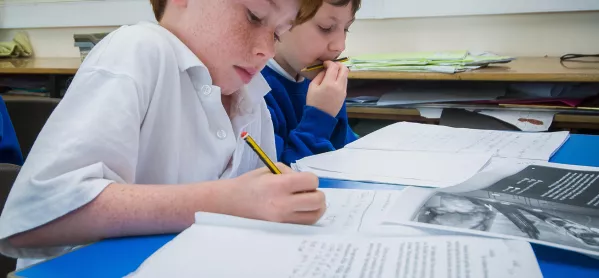Sats markers have been told to accept backwards commas, after uproar over “secret” marking rules, which led to some children being given no marks for correct answers in a previous test.
The Standards and Testing Agency, which oversees the tests, has informed headteachers that in this year’s spelling, punctuation and grammar (Spag) test, markers will accept “reversed punctuation marks, for example, commas and semi-colons presented backwards”.
Michael Tidd, headteacher of Medmerry primary in West Sussex, posted a copy of the email with the comment: “A quiet return of sense to Sats marking. Small steps…”
The news comes after anger over the marking of the key stage 2 Sats in 2017 which earned the hashtag #Satsshambles
More than 550,000 pupils took the Spag tests, which included a question asking them to put a semi-colon in the correct place in the sentence “Come and see me tomorrow I will not have time to see you today” which the mark scheme said would earn them one mark.
When results were returned to schools, teachers queried why pupils hadn’t got the mark despite putting the comma in the correct place after the word “tomorrow”.
It turned out that as well as the published mark scheme, Pearson, the company which runs the marking, had given extra guidance to markers saying that the shape, size and orientation of punctuation marks must also be taken into account.
“The orientation of the comma element of the semi-colon must be inclined to the left or straight down. It cannot include to the right,” markers were told.
Unions demanded the publication of the “secret” guidance, but the Department for Education refused to release it saying that publication would “risk adding to teacher, and in turn pupil, stress”.
Related articles:
Tes revealed that almost a quarter of children who attempted the question got it wrong, before any changes due to review, and a later inquiry by Ofqual revealed that there had been a higher number of changes made to this question during marking reviews compared to other items.
The Ofqual report concluded that the question “did not function as intended” saying that: “It appears likely that this was because during live marking, markers had taken a stricter interpretation of the mark scheme than had been intended, on the basis of training or guidance materials provided.”
The DfE has said that the changes have been discussed with the expert panels involved with test development and were supported by them.
The full details will be provided to schools in the mark schemes used to mark the tests.




